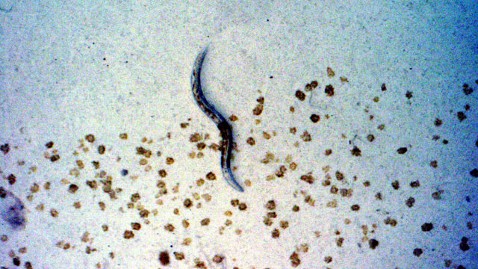Could Worms Lead Our Mission to Mars?

Follow the worms if you want to live!
If, as the English theoretical physicist and cosmologist Stephen Hawking told BigThink.com last year, “the long-term future of the human race must be in space,” then, according to a new study, it will be worms that lead the way.
That was the determination – though in perhaps more rigorous terms – arrived at by a group of scientists who studied the Caenorhabditis elegans , a small roundworm, as it progressed through 12 generations aboard the International Space Station. The worm has genetic similarities to human beings, and so its ability to survive so long in space suggests that we might be capable, too.
“The ultimate survival of humanity is dependent upon colonization of other planetary bodies,” wrote the study’s lead author, Nate Szewcyzk, an associate professor of medicine and health sciences at the University of Nottingham.
“The animals displayed normal movement rates when fed, and appropriate alterations when starved and re-fed,” Szewcyzk wrote. “This demonstrates that it is possible for a multi-cellular animal to live long term in [space] and that it can be studied, remotely, while in [space].”
Researchers sought to address concerns that astronauts, over the prolonged period of time it would take to execute a mission to Mars, would suffer from muscle failure beyond the expected atrophy in the arms and legs.
That the worms were healthy enough to reproduce for so long suggests, they wrote, that other organs — like the heart and brain — could survive years in a zero-gravity atmosphere.
“Given the high cost of manned space missions and high failure rate for Mars missions, we suggest that small organisms such as C. elegans (the worm), despite not being humans, be used as a cost-effective model for detecting, and potentially studying, some of the biological effects of long-duration and distance spaceflight,” Szewcyzk wrote.
The scientists chose the C. elegans because of its mammalian qualities. In 1998, it became the first multi-cell organism to have its genome entirely mapped.
Researchers also found that, of 20,000 genes in total, (a statistically impressive) 5 percent have muscular functions and reactions that align with those seen in humans.